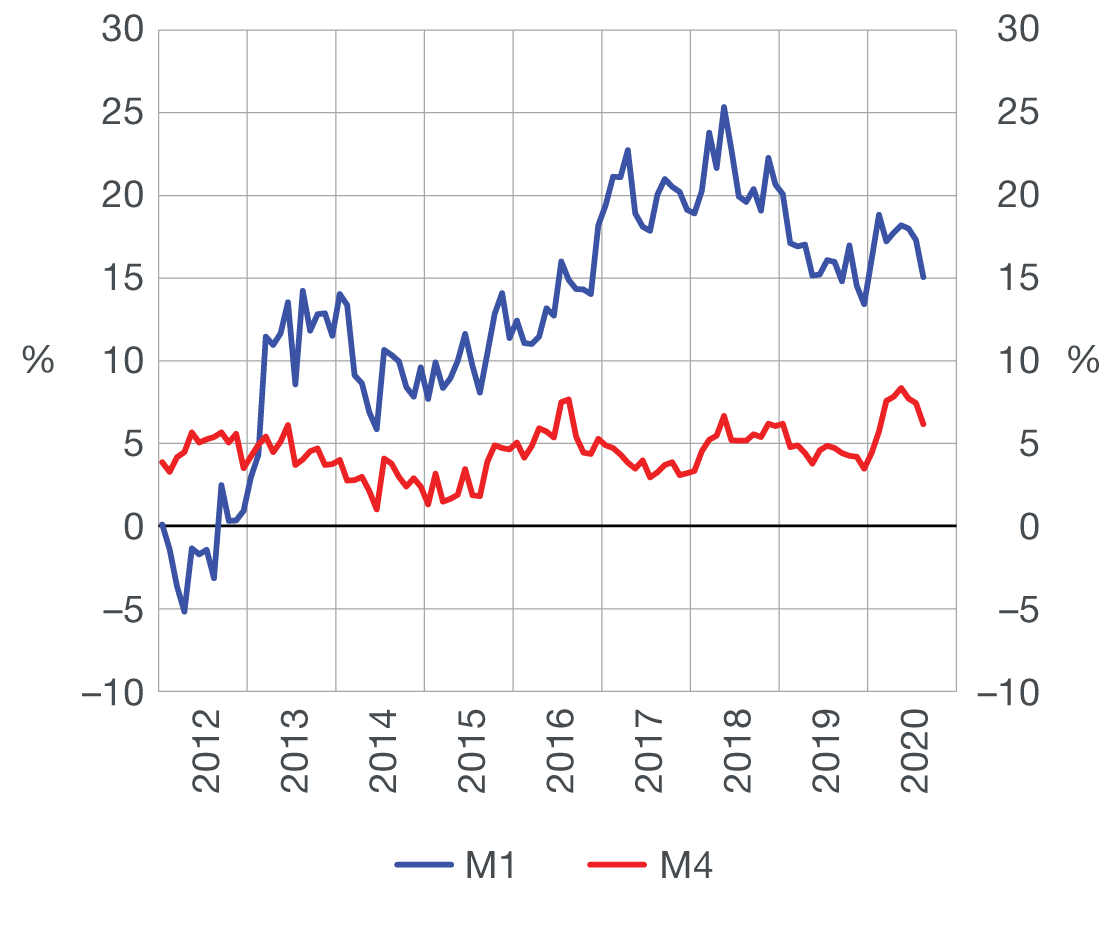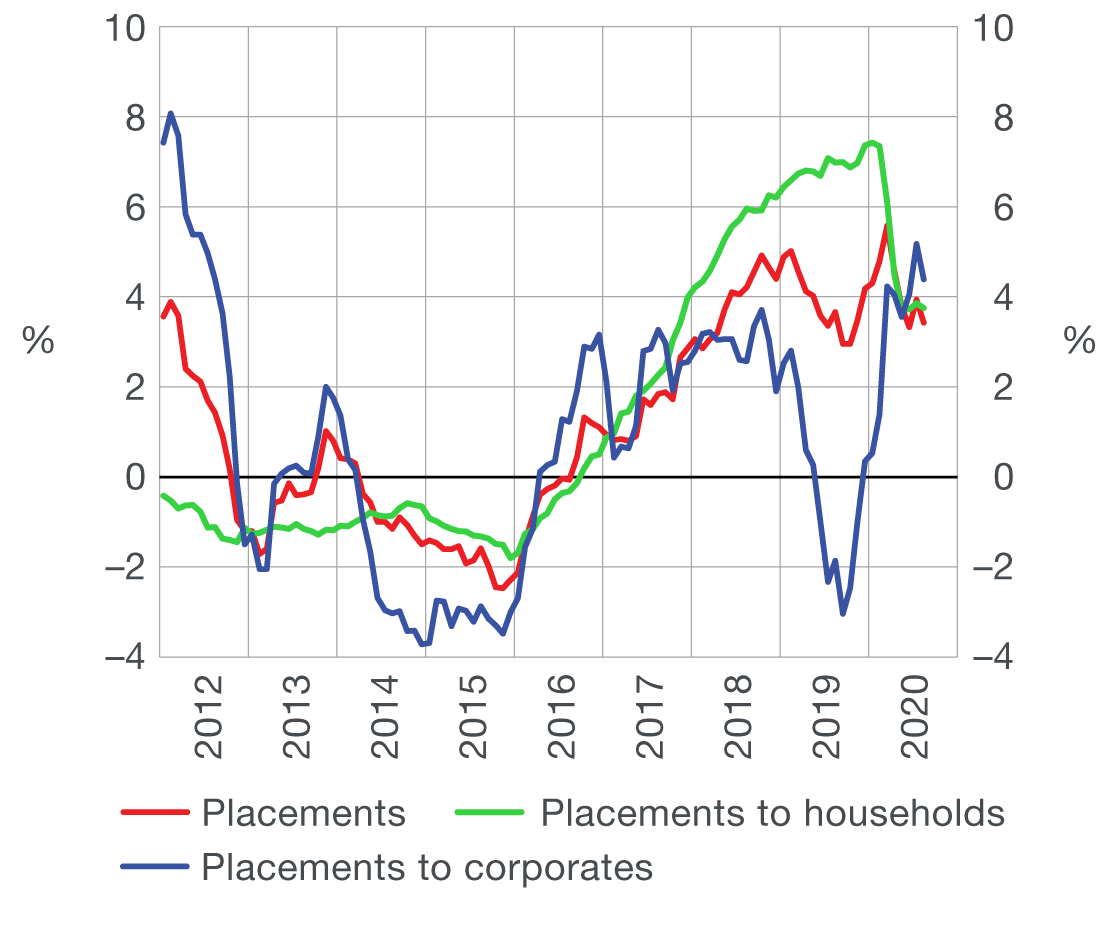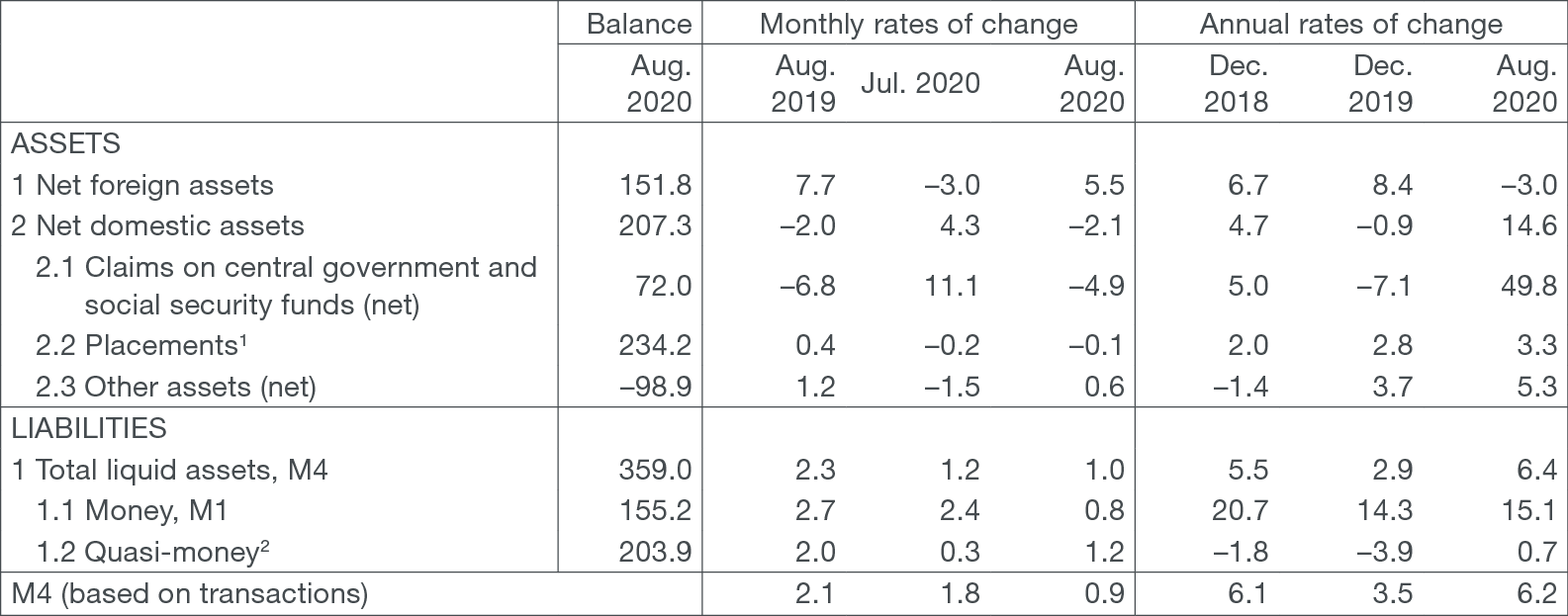From August 2023 the comments on statistics, a short description of selected, recently issued statistical data in the area of monetary statistics and the non-residents sector statistics, are no longer published. They are replaced by Statistical releases.
Comments on monetary developments for August 2020
In August, total liquid assets (M4) rose by HRK 3.1bn, mostly as a result of growth in foreign currency deposits of households and corporates and kuna funds in the transaction accounts of almost all domestic sectors. Since the growth in foreign currency deposits and demand deposits in August this year was of a much lower intensity than in the same month of the previous year, the growth in M4 slowed down on an annual level.
Total placements of monetary institutions to domestic sectors (excluding the central government) fell by HRK 0.5bn in August, mostly as a result of a fall in placements to non-financial corporations in trade and manufacturing, while placements to households held steady relative to the previous month. Observed on an annual level, the growth in total placements slowed down.
Total liquid assets (M4)[1] rose by HRK 3.1bn (0.9%) in August 2020 (Table 1), with quasi-money (mostly involving foreign currency deposits) rising by HRK 1.9bn and money (M1)[2] by HRK 1.2bn. The monthly growth in M4 was mostly driven by the seasonal increase in net foreign assets (NFA) of credit institutions in contrast with the fall in net domestic assets (NDA), which had the opposite effect. The fall in NDA was largely due to a fall in net claims on the central government, i.e. a rise in central government deposits with the CNB and the commercial banks. Despite a monthly increase in M4 and money, their annual growth slowed down in August to 6.2% and 15.1%, respectively, transaction-based (Figure 1), mirroring a slower growth in net foreign assets relative to August of the previous year. Smaller revenues from tourism in August this year compared to the same month of the previous year resulted in a smaller inflow of foreign currency into the banks and a smaller increase in foreign currency deposits and demand deposits.
| Figure 1 Monetary aggregates annual rates of change based on transactions |
Figure 2 Placements annual rates of change based on transactions |
 |
 |
| Source: CNB. |
Total placements of monetary institutions to domestic sectors (excluding the central government) fell by HRK 0.5bn in August (transaction-based). The change in loans in that month stood at almost the same amount and it was mostly the result of a fall in loans to non-financial corporations in trade and manufacturing, while loans to households held steady relative to the previous month. The monthly growth in housing loans slowed down to 0.4% while general-purpose cash loans fell by 0.2%. When observed on an annual level, the growth in total placements and loans slowed down to 3.4% (Figure 2) and 3.9%, respectively, mostly reflecting a slowdown in loans to corporates from 5.5% in July to 4.7% in August (Table 2). As regards households, the annual growth in loans to this sector slowed down slightly, from 3.9% in July to 3.8% in August, influenced by a slowdown in the growth in general-purpose cash loans (from 2.8% to 2.0%), while the growth in housing loans continued to accelerate (from 8.0% to 8.3%), influenced by borrowing for the purpose of reconstruction of housing units damaged in the earthquake.
Table 1 Table 1 Summary consolidated balance sheet of monetary institutions
in billion HRK and %

1 The sum total of asset items 2.2 do 2.8 of Bulletin Table B1: Consolidated balance sheet of monetary financial institutions.
2 The sum total of liability items 2 to 5 of Bulletin Table B1: Consolidated balance sheet of monetary financial institutions.
Source: CNB.
Table 2 Loans (excluding central government) and main components
in billion HRK and %

1 In addition to loans to households and corporates, they also include loans to the local government and other financial institutions.
2 The transactions show changes that exclude the effects of exchange rate changes, securities price adjustments, reclassification and write-off of loans, including the sale of loans in the amount of their value adjustment.
Source: CNB.
For detailed information on monetary statistics as at August 2020, see:
Central bank (CNB)
Other monetary financial institutions
